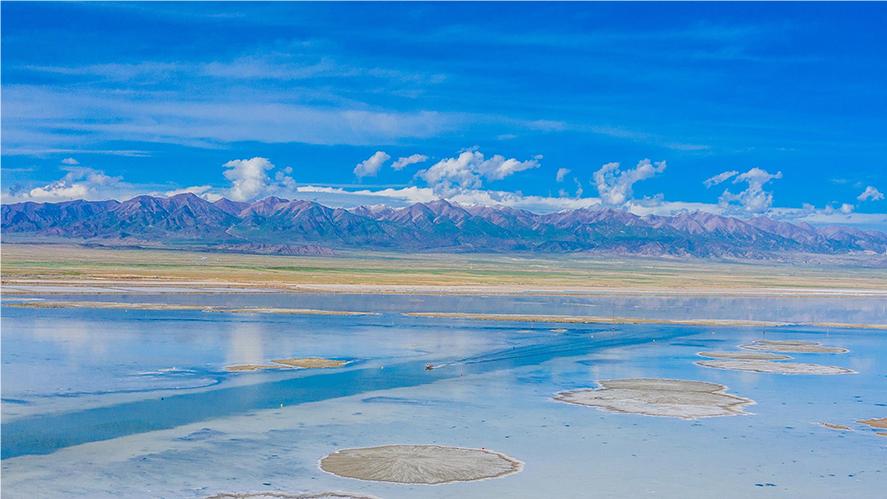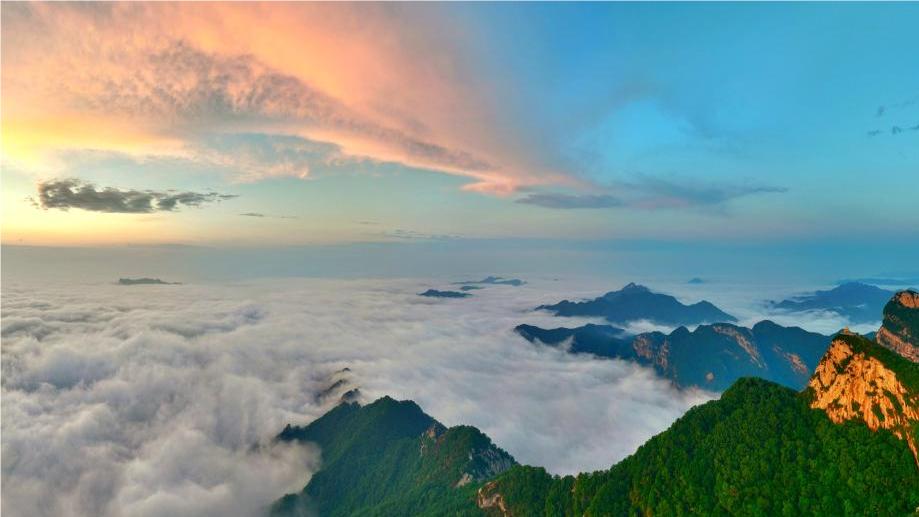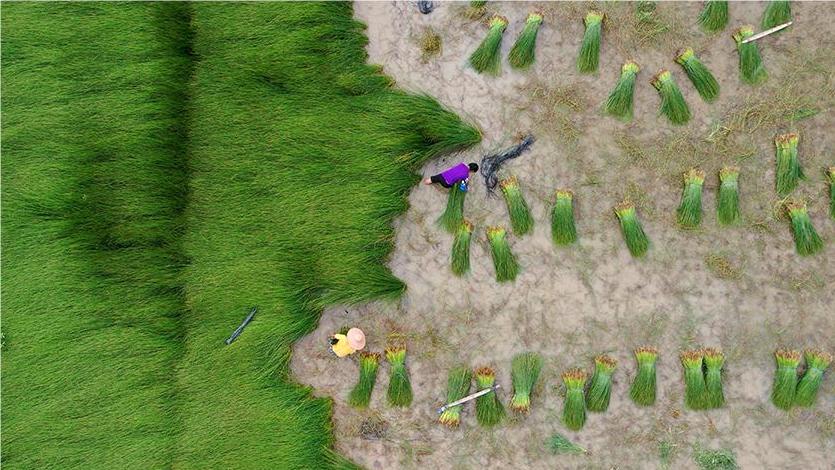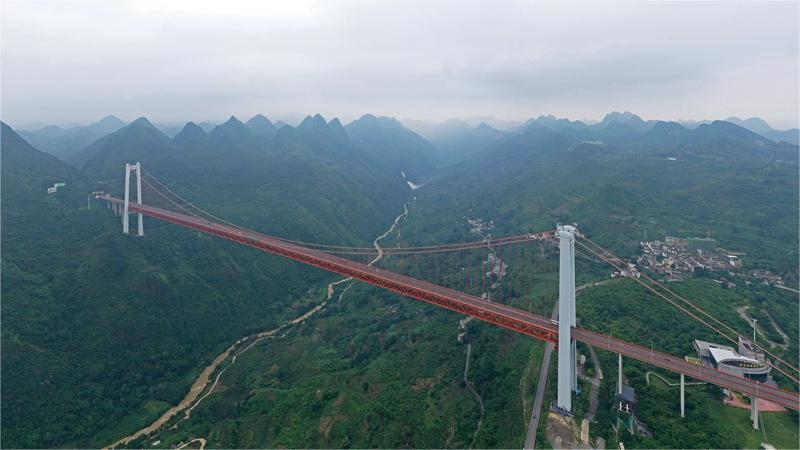Xi's cultural exchange footprints: Tajikistan, the beautiful 'land of mountains'
Traveling west from Kashgar, Xinjiang Uyghur Autonomous Region, crossing high mountains and valleys, and passing by rivers and lakes, we finally arrive in Tajikistan, known as the "land of mountains."
This country is not only traversed by the Tianshan Mountains, the Gissaro-Alai mountain range and the Pamir Plateau, but also has many world-renowned glaciers, which are the sources of rushing rivers.
In September 2014, Chinese President Xi Jinping made his first state visit to Tajikistan. Five years later, recalling the visit in a signed article, Xi said, "When I was first in your friendly country five years ago, I was greatly impressed by its majestic mountains, splendid culture and warm-hearted people."
On a mid-autumn Dushanbe evening in 2014, President Xi Jinping was invited to the residence of Tajik President Emomali Rahmon. To welcome his distinguished guest, Rahmon rolled out a silk carpet at the entrance of his presidential mansion - a Tajik custom reserved for esteemed guests. Rahmon personally dressed Xi in a chapan, which is a traditional Tajik robe, tied a belt around his waist and placed a traditional felt hat on his head.
Today, this robe is on display at the China's Central Gifts and Artifacts Center as a beautiful testimony to the development of China-Tajikistan friendship, guided by head-of-state diplomacy.
After the family feast, the two presidents went to the courtyard of the Navruz Palace, where the two leaders continued their conversation over tea.
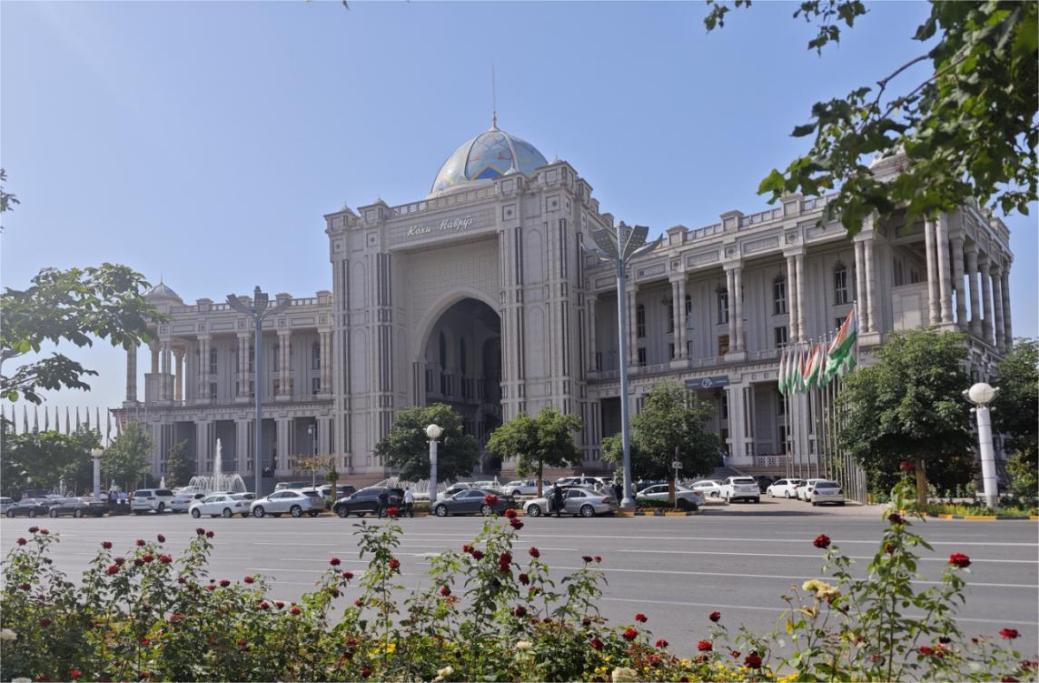
A view of the Navruz Palace, Tajikistan. (Photo: Xing Xue/People's Daily)
At that time, the Navruz Palace had just been completed. It showcases intricate wall carvings and majestic columns that reflect distinct national characteristics. Today, it serves as a venue for important meetings in Tajikistan and as a landmark for visitors to the capital.
At their farewell, President Xi Jinping remarked, "Tonight, we had an enjoyable time and exchanged in-depth views. I sincerely wish for the China-Tajikistan friendship to flourish and be passed down through generations."
A guide at Navruz Palace taught herself Chinese due to the growing exchanges between China and Tajikistan. When guiding tourists, she often points out the seat where President Xi sat during the Shanghai Cooperation Organization (SCO) and Conference on Interaction and Confidence Building Measures in Asia (CICA) summits held at the palace.
"Although I have not met President Xi in person, through news reports, I feel he is very approachable and a charismatic leader," the guide said. "Tajikistan and China are good neighbors, and I hope these two countries' relationship becomes even closer."
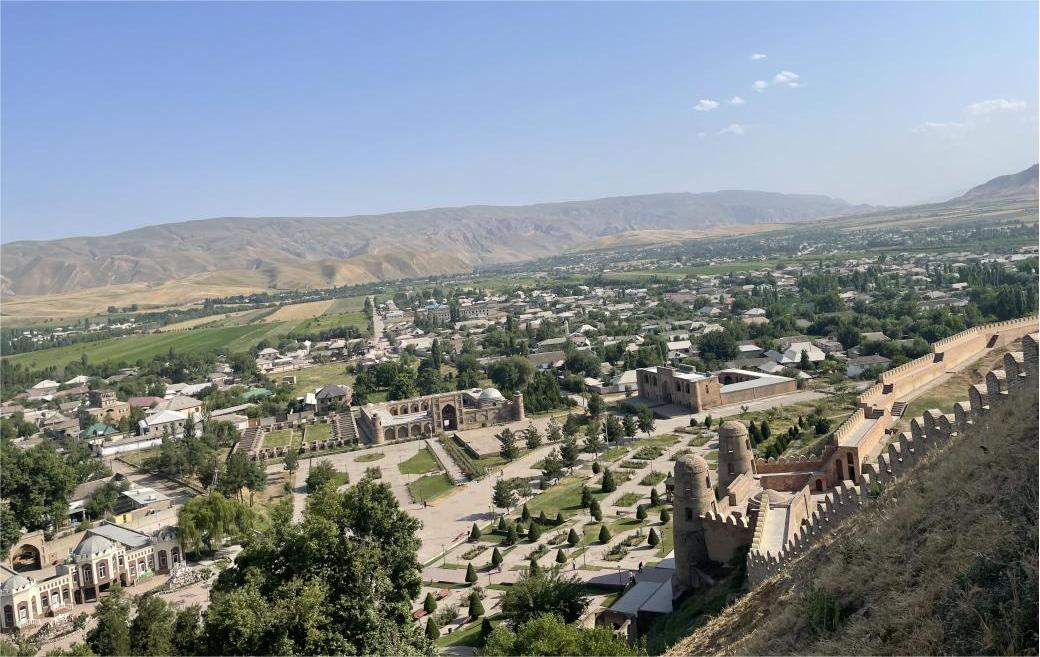
Pictured is the city gate and town of Hissar as viewed from its ancient city walls. Located in northwest Dushanbe, Tajikistan, Hissar dates back over 3,000 years. Some studies suggest that Zhang Qian, a Chinese diplomat who served as an imperial envoy in the late 2nd century BC during the Western Han dynasty, passed through this city on his return journey from Dayuan. (Photo: Qu Song/People's Daily)
China and Tajikistan are close neighbors connected by mountains and rivers, and there is a lasting bond of friendship between the two peoples.
More than 2,000 years ago, an imperial Chinese envoy named Zhang Qian traveled through the harsh terrain to Central Asia. He pioneered what became known as the Silk Road, leaving a splendid chapter in the history of exchange between civilizations.
In April 2019, the National Museum of China, in collaboration with several other national museums, hosted an exhibition titled "Sharing a Common Future: Exhibition of Treasures from National Museums along the Silk Road," which featured several cultural relics from Tajikistan. The exquisite inscriptions on many brass items are imprints of the ancient Silk Road era, echoing the legacy of rich history.
Thanks to cooperation within the Belt and Road Initiative, the cultural encounters between the people of China and Tajikistan along the Silk Road for millennia are renewed.
In May 2019, "Tajikistan Cultural Day" events were held in Beijing and Xi'an, which aimed to introduce Tajik culture to more Chinese.
In July 2023, the LOLA Dance Ensemble, a state dance ensemble of Tajikistan, participated in the Xinjiang International Folk Dance Festival in China for the third time, presenting the audience with a gala show titled "Shine of Colors."
Heritage protection, Luban Workshop, China-Tajikistan Traditional Medicine Cooperation Center and many other projects are like vibrant notes in the symphony of mutual learning between China and Tajikistan.
Amity between peoples holds the key to relationships between countries, and the people are the cornerstone of its growth.
In recent years, several Chinese universities have started Tajik language courses and set up centers on Tajikistan studies, while Confucius Institutes and Confucius Classrooms in Tajikistan are teaching Chinese language. The two peoples are visiting each other frequently, further strengthening the foundation of the friendship.

A student puts together a model at the Luban Workshop in Tajikistan. (Photo: Qu Pei/People's Daily)
In June 2019, during a meeting with President Emomali Rahmon in Dushanbe, President Xi Jinping stated, "Indeed, our two countries are good neighbors linked by mountains and rivers, good friends who trust each other with all sincerity, good partners engaged in win-win cooperation and good brothers who support each other all the time."
The world trends forward with great momentum. Guided by head-of-state diplomacy, the friendship between China and Tajikistan flows like a mighty river, continuously evolving and shaping new paths.
(Planning: Tian Junrong, Ma Xiaoning and Liu Xiaopeng
Coordination: Yang Xuebo, Jiang Yun, Pei Guangjiang, Wang Tian, Li Xiang, Hu Zexi, Liang Changjie, Kuang Xixi and Wang Xiangyu
Writing: Qu Song and Song Jingsi
Translation: Fu Junjie, Xie Jiahui and Fan Xiaoyu
Proofreading: Ma Yuan, Han Xiaomeng, Shan Xin and Lu Dong)
Photos
Related Stories
- SCO members should jointly oppose external interference, says Xi
- Xi's visit to bolster China-Tajikistan cooperation
- Xi says China-Belarus relations to develop healthily, with great strides
- Xi says UN's role as core platform for practicing multilateralism should be strengthened
- Xi says China, Türkiye should push for greater development of strategic cooperative relationship
- Xi expects his visit to take China-Tajikistan all-round cooperation to higher level
Copyright © 2024 People's Daily Online. All Rights Reserved.






